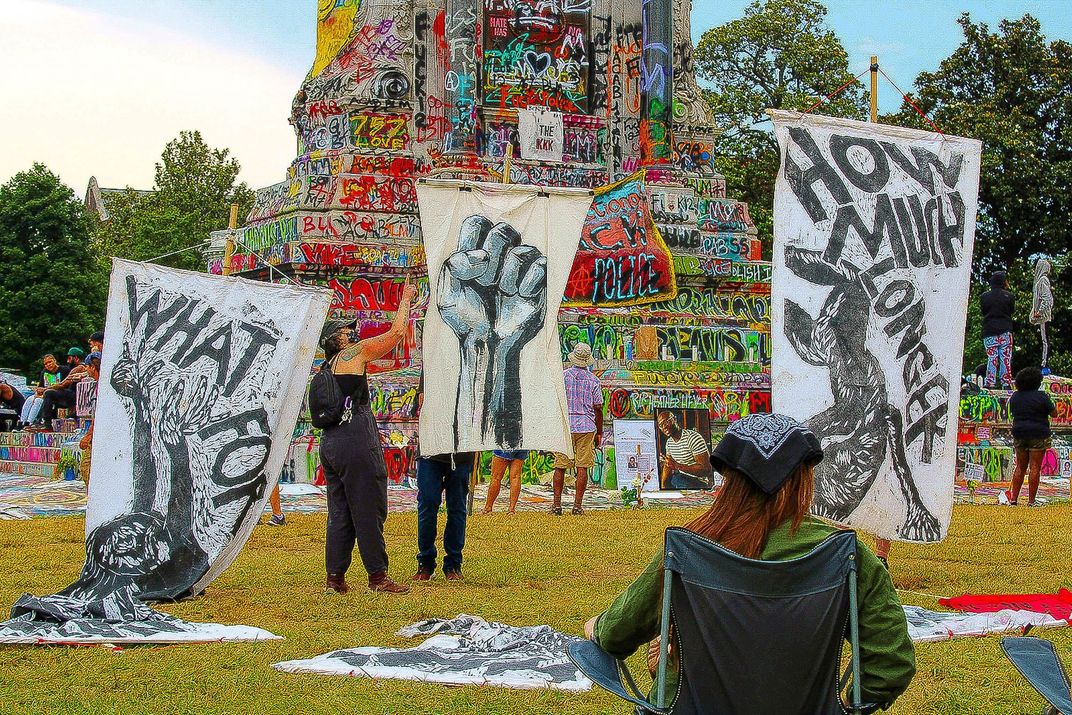Protesters raise signs in an effort to call for police reform. After the death of Minneapolis resident George Floyd, the plinth of the monument was painted with colorful messages that called for justice and police reform. Community members placed small signs that featured photographs of different individuals around the entire base of the plinth. These signs also included details about each of the encounters. During the protests, thousands of individuals visited the monuments and read these signs. During this same period, the space surrounding the monument was unofficially renamed "Marcus-David Peters Circle" - in memory of a young Richmond teacher who was killed by police while experiencing a mental health crisis. Professional signage was even installed by protesters featuring this new name. The space surrounding the statue became a focal point and gathering place for protesters. It also served as a space for community events including voter drives, music and dance recitals, and meeting spaces to devise solutions for issues like police brutality and problematic housing practices. Installed in 1890, the Lee statue that sat atop the massive pedestal was removed on September 8, 2021, after months of protests and court battles. The monument sat on a tree lined boulevard aptly named "Monument Avenue". The avenue is lined with large affluent homes and until recently, it was punctuated with 5 massive Confederate statues. After the social justice protests, the unified calls for justice and reform, and several court cases, all 5 statues were removed, and their pedestals were dismantled.
| Date Taken: | 08.2020 |
| Date Uploaded: | 11.2023 |
| Photo Location: | Richmond, Virginia, United States of America |
| Copyright: | © T. Otey |

